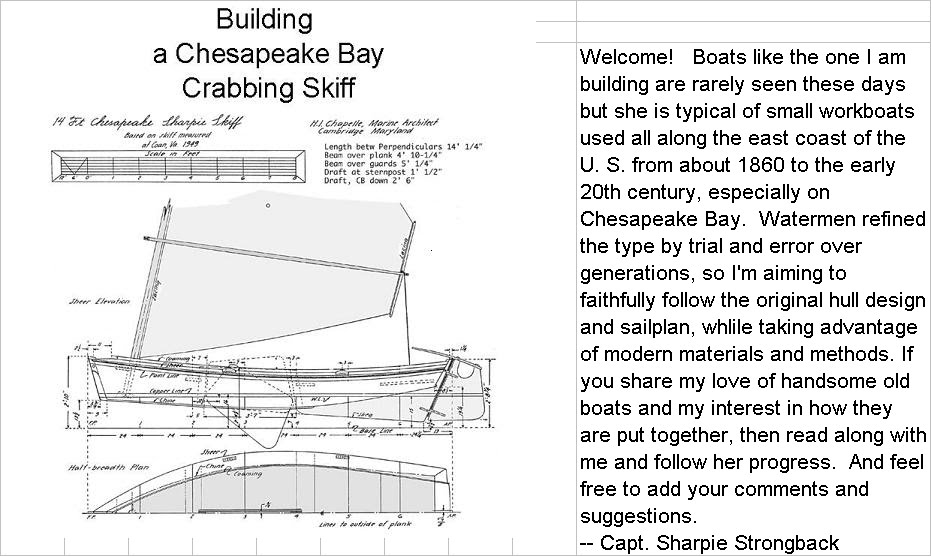







After a four-day enforced layoff for medical reasons, I resumed boatbuilding work today, and got two good projects done; a big one and a little one.
I fabricated the skeg. That was the big job, but it went smoothly. The skeg is built in three layers. 1x6 pine boards make up the core, and a layer of 6mm plywood is epoxied and screwed to each side. After lofting the design shape of the skeg on one plywood panel, I cut out the rough shape, leaving 1" all around to be trimmed off later. That gave me one side of the skeg and a pattern for the rest. I stacked the 1x6's edgewise, laid the pattern over them, traced the outline, and cut the boards to match. I also used the pattern piece to mark and cut the other plywood panel. The boards were coated with epoxy, with thickened epoxy for adhesive between their edges. The pattern plywood panel was also coated with epoxy and then laid on top of the boards. A few small nails held the boards in place underneath. Then I drove 1" bronze screws all around the edges to make a strong epoxy bond. Once that was done, I flipped the piece over and attached the other plywood panel the same way.
After the epoxy cures overnight, I will trim the entire skeg to the design line on the top and bottom edge. I'll dry fit it to the boat and see where the aft edge needs to be trimmed to match up with the sternpost. I'll trim the skeg, permanently install it, make the sternpost and attach it to the transom and the skeg. Then the skeg and entire exterior will be done. The only other thing before the exterior is ready for fiberglassing is to make and attach the outside stem liner.
I also finished the edges of the centerboard today. All edges except the trailing edge were rounded over with the router to leave a 5/8" flat on the edge. The trailing edge was tapered with an electric plane followed by sanding, to leave a 1/4" radius on the edge. If boat speed were the only consideration I would have similarly sharpened the leading edge of the centerboard. But that would have left it vulnerable to damage whenever the boat is beached or run aground, both of which I plan to do a lot. So the exposed edge of the centerboard will be trimmed with a 5/8" brass oval strip, and I finished the edge of the board to that size. The centerboard is now finished and ready for fiberglassing.
The one previous time I built a boat I used "marine grade" fir plywood and was dissatisfied with its quality during construction and in the years since. So this time I went for the best marine grade Okume plywood at twice the cost. I thought the grade standard called for no voids in the interior layers. But planing down the trailing edge of the centerboard revealed that the plywood does have some voids. I am surprised, and not happy about it. Nevertheless, my intention is that all wood surfaces except the spars be encapsulated in epoxy. So the boat should be strong and tight, and with normal maintenance it should last a very long time.

No comments:
Post a Comment